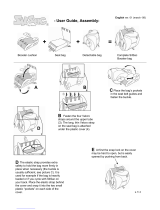
10
Safety
Seat belts
Use your seat belt for all types
of driving
Even hard braking can have dangerous conse-
quences if you are not wearing a seat belt!
Always ask your passengers to use seat belts!
Otherwise, rear seat passengers may be thrown
into the front seat backrests in a collision.
Everyone in the car could then be hurt.
Use the seat belt as follows: pull the belt out
slowly and secure it by inserting the locking tab
into the lock. A loud "click" indicates that the
belt is locked.
The belt is not normally restricted and you can
move freely.
The belt is restricted and cannot be pulled out
further...
• ...if it is pulled out too fast
• ...during braking and acceleration
• ...if the car leans excessively
It is important that the belt lies against the body
so it can provide maximum protection. Do not
lean the backrest too far back. The seat belt is
designed to protect in a normal seating position.
([WHQGLQJWKHODSEHOW
Keep in mind the following:
• do not use clips or anything else that
prevents the belt from lying correctly.
• ensure the belt is not twisted or caught on
anything.
• the lap belt should sit low - not over the
abdomen.
• stretch the lap belt over the lap by pulling
the diagonal shoulder belt as illustrated
above.
Each belt is intended for RQH person only!
7RUHOHDVHWKHEHOW Press the red button in the
lock and allow the reel to pull the belt in. If it
does not pull in the belt completely, feed the
belt in manually so that it does not hang loose.
Seat belt reminder
The seat belt warning symbol in the combined
instrument panel and above the rearview mirror
flashes until the driver and front seat passenger
put on their seat belts. The seat belt reminder
switches off after 6 seconds if speed is lower
than 10 km/h. If the driver or front seat
passenger have not put on their seat belts, the
reminder switches on if speed exceeds 10 km/h
and switches off if speed drops below 5 km/h. If
you take off your belt, the function reactivates
when speed exceeds
10 km/h.
127(The seat belt reminder is intended for
an adult sitting in the front seat. If a belt-fitted
child seat is fitted in the front seat, the seat belt
reminder does not switch on.





















